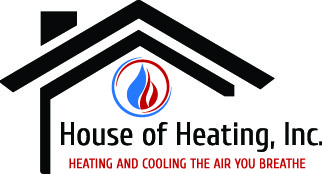
You shouldn’t be forced to compromise on comfort or spend a lot to keep your house at a pleasant temp during hot days.
But what is the right temperature, exactly? We discuss ideas from energy professionals so you can select the best temperature for your loved ones.
Here’s what we advise for the most energy-efficient setting for air conditioning in Marshfield.
Recommended Thermostat Settings for Summer
Most families find setting the thermostat at 72-73 degrees is ideal. However, if there’s a major difference between your interior and outdoor temperatures, your utility costs will be greater.
This is our advice based on the U.S. Department of Energy (DOE) and ENERGY STAR®.
While at home: 78 degrees. While that sounds too high, there are ways you can keep your home pleasant without having the AC on all the time.
Keeping windows and blinds down during the day keeps cold air where it belongs—within your home. Some window treatments, like honeycomb shades or plantation shutters, are created to give more insulation and enhanced energy conservation.
If you have ceiling fans in your residence, the DOE says you can move thermostat temperatures about 4 degrees warmer without giving up comfort. That’s since they refresh by a windchill effect. As they cool people, not rooms, switch them off when you leave a room.
If 78 degrees still appears too hot initially, try running a test for approximately a week. Start by raising your temperature to 78 degrees while you’re home. Then, progressively turn it down while following the advice above. You might be shocked at how cool you feel at a hotter temperature setting.
While away: 88 degrees. There’s no reason to keep the air conditioner going all day while your house is empty. Moving the setting 7–10 degrees warmer can save you anywhere from 5–15% on your electricity costs, according to the DOE.
When you arrive home, don’t be tempted to put your thermostat colder than 78 to cool your home more rapidly. This isn’t useful and often leads to a higher AC cost.
A programmable thermostat is a useful way to keep your temperature under control, but it requires setting programs. If you don’t set programs, you might forget to raise the set temperature when you take off.
If you want a hassle-free remedy, think over getting a smart thermostat. This thermostat connects with your phone, so it realizes when you’re at home and when you’re away. Then it instinctively adjusts temperature settings for maximum savings. How much exactly? An estimated $180 annually on heating and cooling, according to ENERGY STAR.
Another advantage of having a smart thermostat? You can use your phone to watch and adjust temperature settings from almost anywhere.
While sleeping: Around 70 degrees. While ENERGY STAR advises 82 degrees, that might be unbearable for most families. Most people sleep better when their bedroom is chilly, so that’s why the National Sleep Foundation advises 60–67 degrees. But that could be too chilly, due to your clothing and blanket preference.
We recommend following a comparable test over a week, setting your temperature higher and slowly turning it down to locate the best temperature for your residence. On mild nights, you might discover keeping windows open at night and using a ceiling fan is a superior idea than operating the AC.
More Approaches to Use Less Energy During Warm Weather
There are additional methods you can save money on energy bills throughout warm weather.
- Get an energy-efficient AC system. Central air conditioners only are effective for about 12–15 years and lose efficiency as they age. An upgraded air conditioner can keep your house cooler while keeping utility bills down.
- Book regular air conditioner tune-ups. Annual air conditioner maintenance keeps your unit working like it should and may help it run at better efficiency. It could also help prolong its life span, since it helps professionals to discover little problems before they lead to a major meltdown.
- Switch air filters often. Use manufacturer instructions for replacing your air filter. A clogged filter can lead to your system short cycling, or run too frequently, and drive up your utility.
- Measure attic insulation levels. Just about 90% of homes in the United States don’t have proper insulation, according to the Insulation Institute. Most southern climates should have 13–14” of attic insulation, while northern climates need 16–18”.
- Have your ductwork examined. Ductwork that has loosened over time can let cool air into your attic, walls or crawl space. This can result in big comfort issues in your house, like hot and cold spots.
- Seal holes, doors and windows. Keep hot air in its place by closing cracks. You can also caulk or weather strip doors to keep more cool air indoors.
Use Less Energy During Hot Weather with House of Heating Incorporated
If you want to save more energy during hot weather, our House of Heating Incorporated specialists can assist you. Get in touch with us at 715-384-3163 or contact us online for extra details about our energy-saving cooling products.
